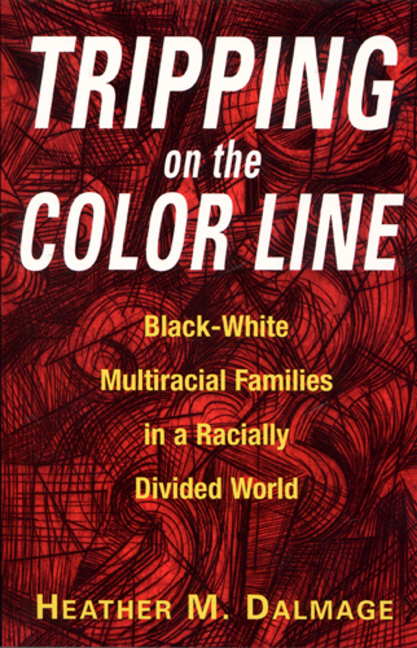Race in an Era of Change: A Reader
Oxford University Press
September 2010
544 pages
ISBN13: 9780199752102
ISBN10: 0199752109
Edited By:
Heather Dalmage, Professor of Sociology and Director of the Mansfield Institute
Roosevelt University
Barbara Katz Rothman, Professor of Sociology
Baruch College of the City Univerity of New York

Featuring a wide range of classic and contemporary selections, Race in an Era of Change: A Reader is an affordable and timely collection of articles on race and ethnicity in the United States today. Opening with coverage of racial formation theory, it goes on to cover “racial thinking” (including the challenging and compelling concept of “whiteness”) and the idea of “assigned and claimed” racial identities. The book also discusses the relationships between race and a variety of institutions—including healthcare, economy and work, housing and environment, education, policing and prison, the media, and the family—and concludes with a section on issues of globalization, immigration, and citizenship.
Editors Heather Dalmage and Barbara Katz Rothman have carefully edited the selections so that they will be easily accessible to students. A detailed introduction to each article contains questions designed to help students focus as they begin reading. In addition, each article is followed by a “journaling question” that encourages students to share their responses to the piece. Offering instructors great flexibility for course use—the selections can be used in any combination and in any order—Race in an Era of Change: A Reader is ideal for any undergraduate course on race and ethnicity.
Table of Contents
PART I: RACIAL FORMATION THEORY
1. Michael Omi and Howard Winant, from Racial Formation in the United States
2. Eva Marie Garroutte, “The Racial Formation of American Indians”
3. Nicholas DeGenova and Ana Y. Ramos-Zayas, “Latino Racial Formations in the United States: An Introduction”
PART II: RACIAL THINKING
Essentialism
4. Joanne Nagel, “Sex and Conquest: Domination and Desire on Ethnosexual Frontiers”
5. Janell Hobson, “The “Batty” Politics: Towards an Aesthetic of the Black Female Body”
6. Barbara Katz-Rothman, from The Book of Life: A Personal Guide to Race, Normality, and the Implications of the Genome Project
A Voice from the Past: Franz Boas, “Race and Progress”
The Social Construction of Race
7. Eduardo Bonilla Silva, David Embrick, Amanda Lewis, “‘I did not get that job because of a Black man…’ The storylines and testimonies of color-blind racism”
8. Margaret Hunter, “The Beauty Queue: Advantages of Light Skin”
9. Heather Dalmage, “Discovering Racial Borders”
A Voice from the Past: W.E.B. Du Bois, “The Conservation of the Races”
Outing Whiteness
A Special Introduction by the Editors
10. France Winddance Twine and Charles Gallagher, “Introduction: The Future of Whiteness: A Map of the ‘Third Wave'”
11. Troy Duster, “The Morphing Properties of Whiteness”
12. Jennifer L. Eichstedt, “Problematic Identities and a Search for Racial Justice”
A Voice from the Past: Frederick Douglass, “The Color Line”
PART III: RACIAL IDENTITIES
A Special Introduction by the Editors
13. Joy L. Lei, “(Un) Necessary Toughness?: ‘Those Loud Black Girls’ and Those ‘Quiet Asian Boys'”
14. Nada Elia, “Islamophobia and the ‘Privileging’ of Arab American Women”
15. Nina Asher, “Checking the Box: The Label of ‘Model Minority'”
16. Patty Talahongva, “Identity Crisis: Indian Identity in a Changing World”
17. Juan Flores, “Nueva York – Diaspora City: U.S. Latinos Between and Beyond”
18. Nancy Foner, “The Social Construction of Race in Two Immigrant Eras”
PART IV: RACIALIZED AND RACIALIZING INSTITUTIONS
Economy and Work
19. Sherry Cable and Tamara L. Mix, “Economic Imperatives and Race Relations: The Rise and Fall of the American Apartheid System”
20. Marianne Bertrand and Sendhil Mullainathan, “Are Emily and Greg More Employable than Lakisha and Jamal? A Field Experiment on Labor Market Discrimination”
Housing & Environment
21. Benjamin Howell, “Exploiting Race and Space: Concentrated Subprime Lending as Housing Discrimination”
22. Mary Patillo, “Black Middle Class-Class Neighborhoods”
23. Kari Marie Norgaard, “Denied Access to Traditional Foods Including the Material Dimension to Institutional and Environmental Racism”
Education
24. Linda Darling-Hammond, “Race, Inequality, and Educational Accountability: The Irony of ‘No Child Left Behind'”
25. Amanda E. Lewis, Mark Chesler, and Tyrone Forman, “The Impact of ‘Colorblind’ Ideologies on Students of Color: Intergroup Relations at a Predominantly White University”
Policing and Prison
26. Loic Wacquant, “Deadly Symbiosis: When Ghetto and Prison Meet and Mesh”
27. David Harris, “U.S. Experiences with Racial and Ethnic Profiling: History, Current Issues, and the Future”
Media
28. Jose Antonio Padin, “The Normative Mulattoes: The Press Latinos. And the Racial Climate on the Moving Immigration Frontier”
29. Jonathan Markovitz, “Anatomy of a Spectacle: Race, Gender, and Memory in the Kobe Bryant Rape Case”
Family
30. Dorothy Roberts, from Shattered Bonds: The Color of Child Welfare
31. Krista M Perreira, Mimi V Chapman, and Gabriela L Stein, “Becoming an American Parent: Overcoming Challenges and Finding Strength in a New Immigrant Latino Community”
Healthcare
32. Mathew R. Anderson, Susan Moscou, Celestine Fulchon and Daniel R. Neuspiel, “The Role of Race in the Clinical Presentation”
33. Susan Starr Sered and Rushika Fernandopulle, “Uninsured in America: Life and Death in the Land of Opportunity”
PART V: GLOBALIZATION, IMMIGRATION AND CITIZENSHIP
34. Anupam Chander, “Flying the Mexican Flag in Los Angeles”
35. Patricia Hill Collins, “New Commoditites, New Consumers: Selling Blackness in a Global Marketplace”
36. William I. Robinson, “‘Aqui estamos y no nos vamos!’: Global capital and immigrant rights”



